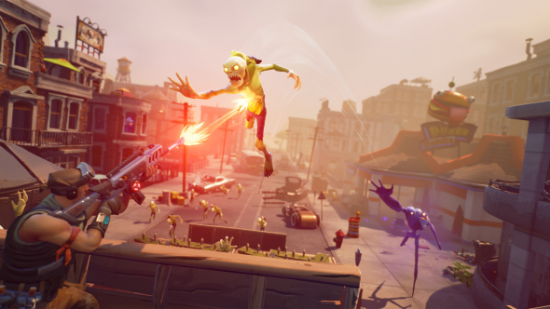As of this week, Fortnite has over 40 million players. To celebrate, we’re republishing the story of how Epic built one of the world’s most successful PC games while the industry shifted beneath their feet. This article was originally published ahead of Fortnite’s early access release last summer.
If you walk past the gilded headquarters of the Bavarian state chancellery in Berlin and into the lobby of the building next door, you’ll see a sign. It reads: ‘Epic Games 4.0’.
I’ll be honest: here, it signifies nothing more than the fact that Epic’s new publishing office is situated on the fourth floor. But talk to any Epic staffer for long enough and they’ll also mention the idea of an Epic Games 4.0, echoing the company’s very first employee and CEO Tim Sweeney.
Related: the best shooters on PC.
Sweeney invented the concept to describe Epic’s two-and-a-half-decade transition. They began as shareware developers (1.0), became ‘90s FPS trailblazers (2.0), grew into Xbox-selling Microsoft partners (3.0) and, finally, morphed into live game self-publishers (4.0). Understanding that last switch is crucial to working out why Fortnite will now launch in early access on July 25th, a full five years after it was first announced. It’s a game that’s been on the frontline of the crunchiest gear change in Epic’s existence.
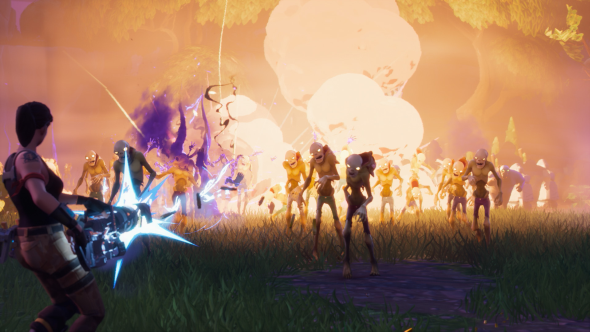
“If you look at Epic five years ago, we were very much a ‘one game at a time’ developer,” worldwide creative director Donald Mustard says. “We’d make Gears of War, we’d put it in the box, and then we’d ship it. And we saw the industry shifting more towards games as a service, downloadable games, and free-to-play being a big influence.”
That’s no great insight after the explosive success of League of Legends and Hearthstone. What’s remarkable is the sheer scale of the ship Epic have had to turn.
Six months after Fortnite’s announcement, the company brought on an outside investor who knew online games and self-publishing – Riot Games backers Tencent. The Chinese internet giant bought around 40% of Epic and a couple of seats on its director’s board for a cool $330 million.
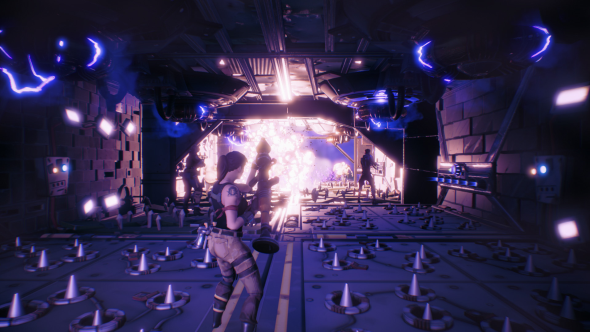
Mustard now oversees the development of not one but five games: the third-person MOBA Paragon; a mystery JJ Abrams collaboration called SPYJiNX; the ninth Unreal Tournament; a mobile JRPG named Battle Breakers; and, older than them all, a third-person action game about building and defending structures from hordes of zombies. Yep, Fortnite. It’s proven crucial to the entire effort.
“It had to shoulder that transition,” Mustard says. “Fortnite was absolutely the tip of the spear.”
Fortnite was deemed the perfect stage for Epic’s ambitions in free-to-play and ‘games as a service’. Its dev team built the Epic Games Launcher that now hosts Paragon and Unreal Tournament. And, beyond that, the game became the testing ground for Unreal Engine 4 (UE4).
“When we first announced Fortnite, it was using Unreal 3,” remembers Mustard. “But as we started to get into the prototype, we were like, ‘ok, our ambition for this is large’. So we switched it. We basically made Unreal 4 to help make Fortnite.”
When lead designer Darren Sugg started at Epic in 2012, Fortnite wouldn’t even start up reliably: “We were running into all the roadblocks as the vanguard for UE4.”
It was 2014 before the team had a “pretty functional prototype” that included approachable building tools, third-person tower defence, and hordes of attacking monsters. We wrote a glowing preview of Fortnite at the time.
“But we looked at it and envisioned a really deep RPG feel combined with the crafting,” Mustard says. “To do that and polish it to the level we expect, we thought it would take about another three years. We had the ingredients, we had the recipe, we just had to make it.”
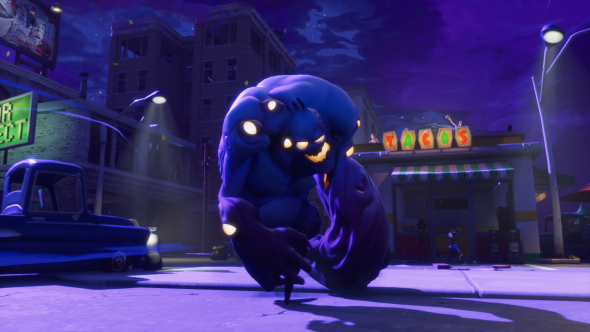
Since then, Fortnite has morphed from PC exclusive to controller-friendly multi-platform game. It’s gained some un-sexy but crucial features like a reliable backend and the ability to take credit card orders from Russia and China.
“We had to build stuff that takes huge teams years to do,” explains Mustard. “It took a lot, not just to make the game, but to reorganise Epic to be able to service a product like that.”
From a publicity perspective, the last 18 months have been particularly quiet for Fortnite. Though it hasn’t seemed that way for Sugg, who has been hosting an alpha audience of 50,000 players.
“It’s been weird, because from my perspective we’ve been continuously interacting with players the entire time – it’s just that we haven’t made a big deal about it with the press,” he says. “There’s a significant amount of difference between the game two years ago and the game now, so we’ve just been furiously iterating.”
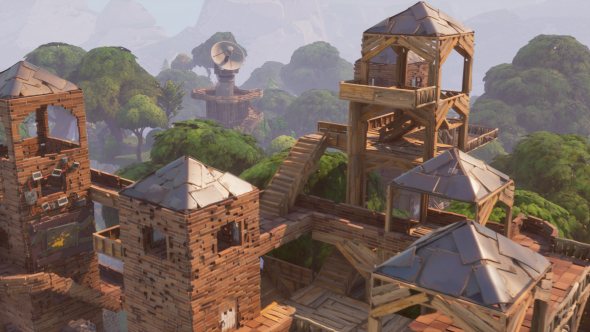
Half a decade after Cliff Bleszinski revealed that first trailer, Fortnite is almost there – and Unreal Engine 4 is doing “phenomenally well.” It’s been adopted by game developers, of course, but also by parts of the automotive, military, and health industries. As Mustard notes with pride, several shots that were rendered in Unreal made it into the final cut of Rogue One.
“It’s one of the primary reasons that we’re in the fortunate position to take the time to make a game like Fortnite the way it needs to be,” he says. “We’ve seen unprecedented growth in the engine over the last few years, not just fuelled by games.”
When I ask whether Epic needs to make games any longer, Mustard pauses.
“Epic wants to make games,” he says carefully. “It needs to. We believe a big part of our ‘special sauce’ is that we don’t just make the hammer – we use the hammer.”
